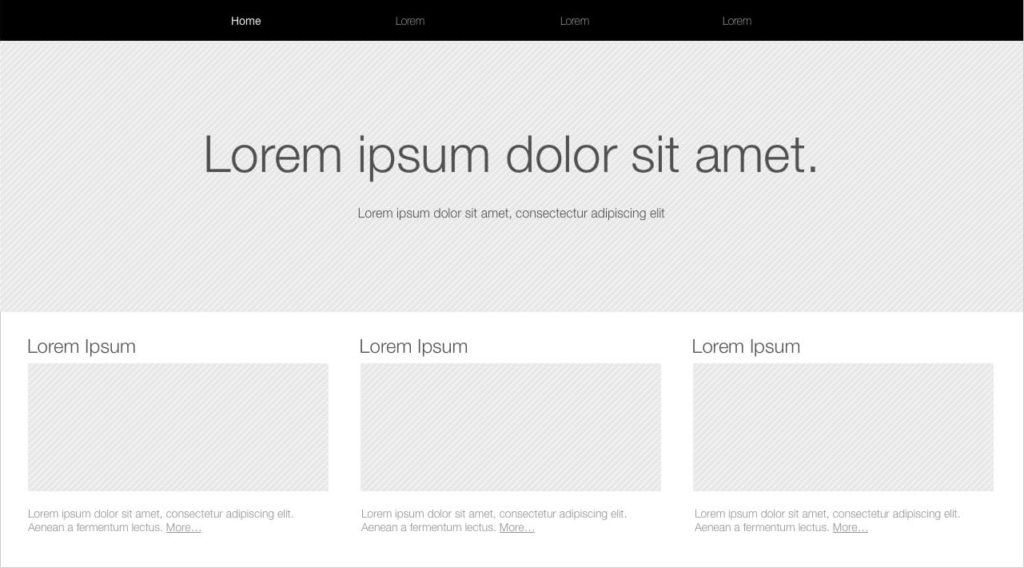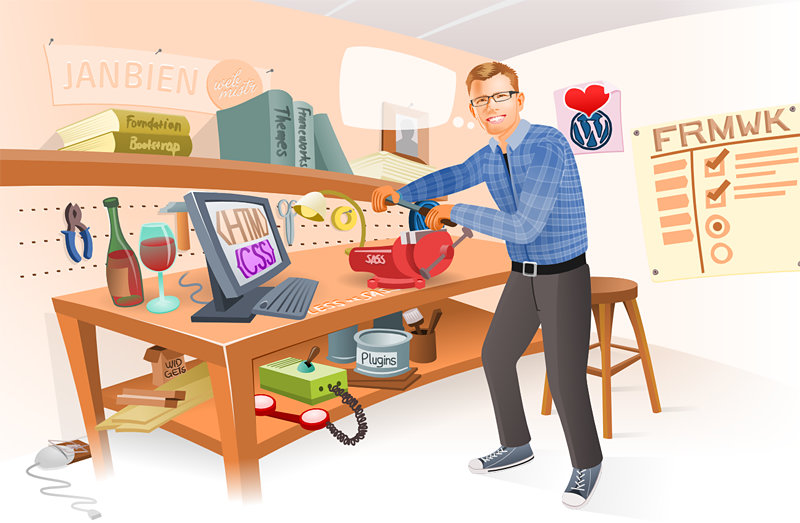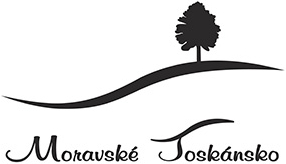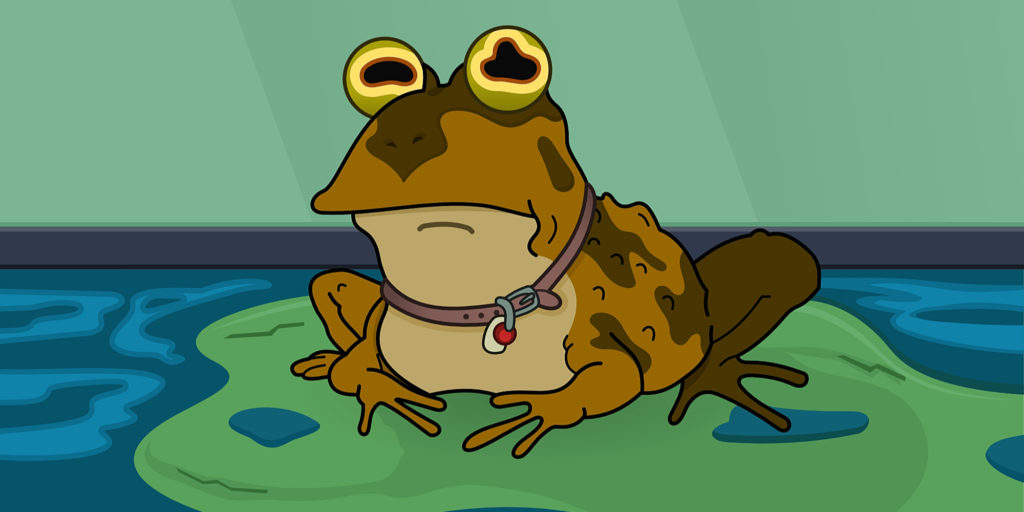Embrace Your Weirdness
Are you hoping to make it big or grow your business? Then you need a website. And if you want your website to bring clients in and then knock their socks off, it’s going to have to stand out. A website that is well designed on a technical level doesn’t cut it these days.

Content comes first
Design and layout can wait. If you need to build a new personal or company website, first you have to do your homework to set the stage, before you ever get to things like graphic design, logos, photographs or pricing. This homework is much more critical to your success than colors and shapes.
If you answer the following questions thoroughly and honestly, your website will almost design itself. You start by taking a look at your company and brand from the outside, from a customer’s perspective. Figure out what they’re looking for.
1 — Do you know your customer?
New projects have a harder time with this question, of course, but you can find plenty of good advice in books like The Freelance Way, The 4-Hour Work Week and Lean Startup. Or maybe you’ve already got a website but it’s starting to show its age and could use a bit of a facelift. That’s a great opportunity to sit down and think about who is paying for your services and what they want to get from you.
2 — Do you have a kickass USP?
New businesses often forget to give proper consideration to finding their unique selling point – what value they add, what sets them apart and makes them stand out against a sea of competitors. Are you cheaper? Are you better? Do you offer something no one else has? Or maybe you sell it somewhere no one else goes? Got something nobody else can copy? Figure out what it is. Because unless you’ve got something going for you that others can’t provide, you may find it difficult or impossible to get your business off the ground. Incremental improvements here and there will never blow anyone away.
3 — Do you inspire confidence?
Another common problem is failure to create a long-term business strategy. You can’t just start a company because you know somebody else in the business and they’re raking it in. You can’t just throw money at the project and then sit back and cross your fingers. You have to pour your heart and soul into it – you should eat, sleep and breathe your business. Let people see that drive, that passion. The client relationships you build with this approach won’t be measured in days or weeks, but years. Decades.
4 — Are you better than the competition?
Maybe you can make a little go a long way, or maybe you’re happy enough with what you have, but you may find yourself losing interest over time. It’s easy to burn out. Doing what you do to the very best of your ability is ultimately the wiser and more sustainable strategy. Set yourself challenges and push yourself to be better. Your website should do the same → showcase the best you can do, point the way to a bright future. Let potential clients see how you work and they’ll love working with you.
Roll up your sleeves
So. If you made it through all four questions without getting stuck, let’s kick it up a notch and run through a few more questions you will need to have clear answers to as a serious professional.
- Do you know what your current website doesn’t do that it should be doing?
- Do you know your ideal client?
- What kind of client would you like to reach?
- What do clients like about your products/services?
- What are the values of your company, product or personal brand?
- Do you have a clear domain name?
- Are your social media accounts active?
- Do you know your competition and how to make yourself stand out?
- Is your brand archetype clearly defined?
If you can answer all of these questions, you probably have a pretty clear idea. And if you’re not sure about some of them, don’t worry.
That’s what I help my clients with. I help them see the bigger picture and focus on their best service and most attractive product. We make that the star of the show and the website comes to life.

How to design an epic website
Most of all, don’t get in over your head. There’s no one-size-fits-all solution, but a few basic techniques can give any website a boost. The smaller ones, at least, for businesses just getting on their feet. Corporate websites involve another layer of complexity, but that’s a story for another time.
What not to do
People make all sorts of newbie mistakes on their first website. Here are some of the most common ones I see all too often:
- Goes too deep, too much jargon
- Photographs scream stock image → that business meeting scene is a popular one!
- Impersonal content that fails to draw visitors in
- Client testimonials too long or too many of them
- No third-party confirmation (professional memberships, certifications, awards)
- Blog or news section empty or boring
- Mobile version is too wordy
Eight out of 10 website clients believe they’ll be able to post news items to their sites at least twice a year. In the end more like two out of 10 manage it.
Less is more
A short joke is punchier than a long one. A picture is worth a thousand words. The best metaphor for a website is probably an illustration. Be ruthless as you refine your web copy – cut and polish it like a diamond and it will shine like one. The end result will be easier to understand and will get the job done better.
One page to start with
I almost always recommend that new projects and brands start with a single-page website. You can get them online very quickly for immediate feedback on your products. A one-pager is easy and doesn’t take a lot of prep work. Keep it up for a year or two and then we’ll all have a better idea of how to build your new, more sophisticated megawebsite. Starting out with the full-blown multi-pager involves too much crystal ball gazing and usually ends up being more expensive than it’s worth.
What you need next
Besides the web design itself, you’ll also want to get a handle on a few other areas every site needs: copywriting, photographs, SEO/SEM, PPC, social media advertising, data analysis, user testing, and marketing mix. Every professional you bring on board will get your services that much closer to potential clients.
If you’re feeling really ambitious, you can start creating attractive original content. Blog posts with valuable information in your area of expertise will definitely raise your profile. You can give away e-books in exchange for contact information on potential clients. Let people see how you work. That will keep visitors coming back again and again.
Weirdness — your wild card
The whole point of promoting your business is to convince people they should never forget your brand (your company, name, product). That it’s better than anything else on the market. You want to be different, unforgettable…in a word, weird.
I didn’t come up with the phrase “Hold on to your weirdness”. I heard it in a talk by Madla Čevelová, who refers to herself as a marketing witch. Madla summed up perfectly something that I had thought for a long time, so thank you for that.
Feelings of surprise or even shock make events more memorable. We remember something better if it is unusual in some way. In other words, your weirdness is what helps people remember you. You can read more about this concept in the book Smartcuts.

Where to find weirdness
Every person, every company, every brand has something different about them. We all operate in a certain context, with our own passions and subject knowledge. And we can either try to keep those things separate from our professional lives, or we can go all in and mix an unforgettable cocktail of expertise and personality.
For me the problem arises when so many of us try to block that weirdness out of our work lives, believing that work is work and play is play. Certainly that used to be the case. But in today’s ultra-connected world, you can hardly hope to hide the fact that last week you were working on a juicy project and next week you’re rewarding yourself with a trip to the Seychelles.
Admit it — you know you love travel, palm trees and coconuts!
How to cultivate weirdness
My weirdness earned me the nickname the graphic designer in the camper van. I can assure you that while blogging about our family travels around Europe has gotten me into magazines, onto Czech and Slovak television, in front of lecture halls large and small, and even brought in some great business… I didn’t plan any of that! I had no idea that would happen! — Travel was simply something I felt passionate about, so I wrote about it.
And somehow that made me more “real” to my clients. Suddenly I wasn’t just the faceless contractor in competition against the owner’s nephew building a website on his dad’s computer at home. I became a business partner, a professional with his own opinion and clear priorities.
And over time I found that the clients approaching me were business owners with their own camper vans, yachts, RVs and offroad vehicles. Pretty wild, right? But you know what? We almost always have a good chat before getting down to business. I love it!
How to share your weirdness
First of all, stop hiding it. If you like wearing yellow shirts, wear them on your website and in your media appearances. If you spend your evenings playing poker, tweet about it. If you love nature, give your website a wood background. And, you know, if you like watching people in the shower, maybe keep that one to yourself.
Whatever makes you ‘weird’ doesn’t necessarily have to be incorporated into your brand, logo or tagline directly. You can just mention it from time to time on your website or Facebook page, letting your personality shine through and highlight your personal or company philosophy. This will make people see you as a person rather than a faceless, forgettable figure.
One powerful tool → the About Us page
If done right, your About Us page can bring you and your company to life in the online world. Once little more than an afterthought, today’s About page plays a key role in promoting long-term business relationships.
This is where you talk about your values, experience, awards, history… Basically anything and everything that makes you YOU. It’s like a get-to-know-you meeting before you ever meet. This page has huge potential in building B2B relationships especially. You can dazzle clients or you can crash and burn. If you’re open about who you are and what makes you tick, you’ll have a clear advantage over competitors still hiding behind an anonymous contact form.

I’ve built lots of meaty About pages with my clients. Take a look at a few corporate websites:
- ximilar.com/about-us
- camperguru.com/about-us
- stockphotos.com/about
- woodplasticgroup.com
- weblate.org/en/about
Personal websites are pretty much built as one big About page, usually a one-page site, or a landing page and a blog.
An About page could easily sound like singing your own praises, but that’s really not the goal. It’s meant to showcase who you are as a person, your philosophy on life, & any accomplishments you’re particularly proud of.
It should help potential clients see that you didn’t just fly in from Mars yesterday, but that you are a real person living a real life here on Earth and that you know what you’re doing. So if you have any narcissistic tendencies, I recommend being especially careful with this part. It’s not really the place for a selfie gallery.

The kind of weird I’m talking about
Just a few more examples of weirdness in action. These are some websites of people who have built their brand around embracing their weirdness:
- Mr. Money Moustache — American financial blogger riding a bike?
- J Money — quite open & honest financial blogger
- Sailing La Vagabonde — family sailing & raising a kid on a catamaran!
- Miton — which one is it, an investment company or a circus?
- Mailchimp — what a name for the boring corporate world!
Update: This great talk by Vitaly Friedman is about the same subject.
And as long as we’re talking about naming things. Emil, who as it happens did my Czech copy editing (thanks!), coined and registered the truly weird name Moravian Tuscany, to the surprise and delight of the winemaking region in Southern Moravia.

So: What does your weirdness look like?



